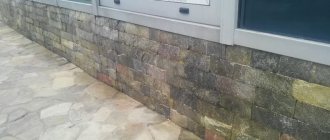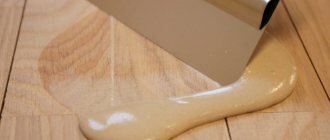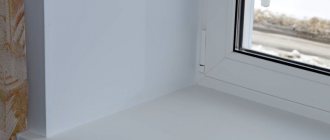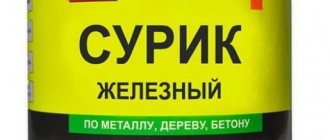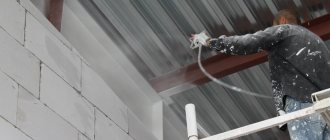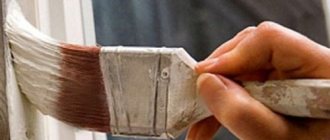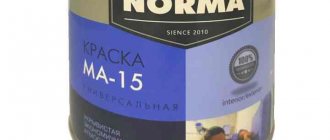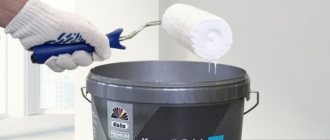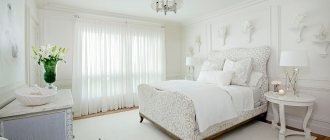The durability and presentable appearance of decking boards is only achievable if they are coated with high-quality and reliable paint. It is able to protect a wooden surface from almost all external factors that lead to aging, deformation or destruction. If you approach the choice of paint rationally and competently, you can eliminate all the reasons that will lead to repainting the terrace.
Main destructive factors
That part of the terrace that is located in the open air is constantly exposed to the following negative influences:
- Precipitation (including acid rain).
- Temperature changes.
- Solar radiation.
- Microorganisms and mold that cause rotting.
- Insects.
Applying paints and varnishes to the surface of the decking board is one of the most effective ways to protect against all these phenomena.
How to choose a tree for a terrace?
Humidity
Sellers can rarely answer the question of how wet the wood is and how it was stored. The correct humidity for construction is 9-15 percent. If there is more water in the material, then perhaps in the heat or after drying the board you bought will change in size (for example, a 150 mm board will decrease by 5 mm). A perfectly fitted floor or roof may develop gaps. Wood that is too dry is also not suitable; after rain, the floorboards will expand and the floor will not allow water to pass through; the wood will begin to rot, and no one needs puddles in the middle of the terrace either. Therefore, when buying building material for a terrace, measure its moisture content with a moisture meter.
Wood moisture content is determined with a moisture meter (hygrometer). If you are building a terrace for your own home, do not spend money on buying a device, rent it
Texture
Construction bases offer a choice between perfectly smooth (treated) boards and boards that have retained the natural texture of the wood. Intuitively, many people choose untreated boards, because they retain their natural appearance, are cheaper and look stylish. But let's look at the pros and cons of these types of material.
Smooth boards
This type of wood is easier to clean and dries faster. In addition, smooth boards require less frequent processing, since they do not have gaps and depressions in which mold or moss can appear.
But it doesn’t look so beautiful, it’s not so pleasant to walk on barefoot and it’s easy to slip.
Boards with texture
A board with a natural texture is more comfortable for barefoot walking, less likely to slip on, and looks great.
But mold appears more often on an uneven surface, it wears out faster, and treatment products need to be applied more carefully, which is why their consumption increases.
Now let's decide on the means for regular wood processing.
Features of decking boards
Decking boards are produced by pressure molding a mixture of wood and synthetic sawdust, and to add color, a coloring pigment is additionally added to the mixture. This board is also called wood-polymer composite (WPC). Laying a terrace has a special term - decking.
Important! Mainly larch is used as wood.
The table shows the main technical features of decking boards:
| Technical Parameter | Meaning |
| Density | 1.2 g/cm2 |
| Moisture absorption | 5% |
| Surface wear | 0.1 g/cm2 |
| Temperature range | From 0 45 to + 70 °C. |
| Fire safety | Class – G4 (ignites on an open fire) |
Positive characteristics:
- Hydrophobicity. High moisture resistance ability.
- Does not attract insects and rodents due to synthetic components in the composition.
- In order for the decking board to catch fire, prolonged exposure to a temperature of at least 600 °C is required.
- The material is completely environmentally friendly.
- Does not react to cleaning agents.
- Doesn't slip when walking.
- Service life is not less than 50 years.
- It is easy to paint.
Flaws
- A defective board may be subject to deformation and be out of sync with the uniform geometry of the rest of the surface.
- Externally it may resemble plastic panels.
- Some manufacturers produce boards with a polymer smell.
Further care
The floor will last a long time if it is used correctly and properly maintained. The presence of heavy furniture on light paints and varnishes is undesirable. This must be taken into account immediately, so as not to hide the deformation of the surfaces later. In principle, there is no difficulty in maintenance, but you need to remember that painted floorings do not tolerate aggressive household chemicals. For washing, it is better to use mild liquid soap or just clean water. There is no need to pour liquid onto the coating; the rag should be wrung out well. If water gets between the boards, it is fraught with rot and fungi.
An open country wooden veranda or terrace is covered for the winter. One popular inexpensive option is outdoor curtains. They are good because they do not block the view from the windows if the room is adjacent to them. The curtains are easy to roll up and install. The floors are covered with tarpaulin or thick polyethylene. If the area is a walk-through area, several mats are laid on top to prevent slipping on the film.
We recommend learning how to build a canopy over a terrace.
Wooden floors on a terrace or veranda require good coverage and careful maintenance. The more resistant the paint and varnish material is to the influence of the external environment, the longer the coating will last.
Properties that paint should have
Paint for decking boards must have the following properties:
- Frost resistance. Paints and varnishes must withstand extreme temperature changes, including extreme cold.
- Moisture resistance . This term refers to the ability of paint to reject moisture from its surface after it dries. If the paint does not have hydrophobic properties, then even the slightest precipitation will lead to moisture penetration into the pores of the wood and its deformation. Moisture resistance can be enhanced by special impregnation for the terrace.
- Resistance to burnout. We are not talking about exposure to open fire, but about staying under prolonged solar radiation. Poor quality paint fades in the sun, that is, it loses its color and properties.
Important! When purchasing paint for a terrace, it is necessary to take into account the fact that for terrace paint all the properties that are listed must be significantly higher than for paint for treating the interior surfaces of a room. Since the terrace experiences much stronger environmental influences.
Composition selection
Based on the characteristics of the materials, we can draw conclusions about its suitability for painting the terrace. Oil has the best properties. If you take it with the addition of wax, you get a very durable coating that will withstand any use.
Anti-slip oils are better suited for large families with children or houses that are used in winter. And antibacterial agents will help in warm climates with high humidity. If no special properties are required, oil with colorant is suitable for the veranda.
Chlorinated rubber paints are not very suitable for wood floors. If your budget is limited, you can look among yacht varnishes for the most acceptable price and quality. But you need to work with them carefully, observing safety precautions.
Types of paints for exterior wood finishing
With the exception of universal paints, individual compositions are developed for each type of surface. How to treat the board on the terrace? Below will be presented the most common compositions that are actively used in construction and are sold through a network of construction supermarkets in any city:
- Water-dispersion paint . With its help you can paint ceilings and walls, even on the surface of old wallpaper. At a relatively inexpensive cost, the paint practically does not fade; it is diluted with a small amount of water. Wash off hands with water without using solvents.
- Latex. They are distinguished by high moisture resistance, so they are actively used when painting bathrooms and toilet rooms. It dries very quickly and practically does not fade. Due to the specifics of the components, when drying, a thin glossy film appears on the surface.
- Alkyd. The painted surface becomes resistant to mechanical stress, so these paints are used to cover areas with high traffic. It does not fade and dries quickly, but may crack if applied incorrectly.
Important! The paint is toxic in liquid form. All work is performed using a respirator.
- Acrylic. The main properties of such paints are moisture resistance, frost resistance, and resistance to mechanical stress. Do not fade in sunlight. Thanks to their brightness, they cover the facades and external gables of houses. These paints are the most expensive on the market. Dry 2-3 hours after painting. The surface after painting becomes similar to corduroy.
- Oily. Their composition cannot ensure the absence of sunburn. They process wooden surfaces. The surface requires pre-treatment and sanding. Drying time is at least 24 hours after application. After drying, swelling and cracking may occur.
- Enamel. Enamels can be used to paint any metal surface. For application, the surface must be primed with a special compound. Very resistant to temperature changes, moisture and other climatic and mechanical influences.
Important! In addition to paints, you must purchase the following substances: drying oil, solvent, gasoline, turpentine and kerosene. In addition, you will need equipment and tools for painting.
Useful tips
If you are replacing or laying a new veranda, then it is better to choose boards made from hard wood. They will not wear out, they cost more than soft ones, but their durability and wear resistance are better. If there is a desire to obtain a more pronounced wood texture, the surface is treated with stain before coating with oil.
For the winter, you can cover the floors with polyethylene, so they will be less exposed to temperature changes. To prevent slipping on polyethylene, rubber mats with holes are placed on the path.
If there is a desire to obtain a more pronounced wood texture, the surface is treated with stain before coating with oil.
There are many products on the market that can be used to paint the floor on a veranda at the dacha; half the success of obtaining a durable coating lies in the choice made. Knowing the characteristics of different types should help you choose the best option for painting. The process itself will not take much time and effort; the main thing is not to neglect the surface preparation stage.
Preparatory work for painting the floor on the veranda
Before you start painting the floors, you must take the following steps:
- The surface is thoroughly cleaned. First, large particles of debris are blown off using a compressor, then the surface is swept and finally washed with a rag.
- If the surface is moistened, it is dried with a hairdryer.
- The surface of the board is sanded if there are burrs, chips or chips.
- If there are gaps between the boards, they are rubbed with a mixture of wood sawdust and PVA glue.
- A primer coat of paint is applied, which dries within 7-8 hours (drying time varies depending on the paint).
- The base coat of paint is applied.
Important! Access to the painted surface should be limited to avoid damage. In order to prevent rotting, the surface can be additionally treated with an antiseptic.
Surface preparation
Before you can paint your deck, you need to prepare it. Preparatory work will help you get an even and beautiful coating. Carry out the following actions:
- Removing the top dark layer of wood using an abrasive disc or plane. The action is carried out until a lighter color appears.
- The surface is sanded with fine sandpaper.
- The floor is washed so that the surface is completely clean.
- After drying, the floor is impregnated with an antiseptic; work with a brush; the entire surface should be thoroughly treated.
- Applying primer in 2-3 layers.
Each new layer should be applied only after the previous one has completely dried; the timing can be seen on the product packaging.
Preparatory work will help you get an even and beautiful coating.
Required Tools
To work with the coating, you need to prepare the following tools
- Planer, sandpaper or sander.
- Antiseptic.
- Primer mixture.
- Coloring agent and impregnation.
- Small and large brushes.
- Roller.
Buy everything from this list, without these tools it will be difficult to get the job done.
What is known about varnish?
How to treat decking boards - varnish
The main function of this product is to form a waterproof film on the surface. This makes it easier to care for the floor covering and extends its service life.
For outdoor use, such types of varnishes as façade (represented by acrylic and alkyd-acrylic mixtures) and yacht (alkyd and polyurethane-alkyd compositions) are more suitable. Regardless of which one you decide to use, you should first familiarize yourself with the advantages and disadvantages of the chosen option.
The positive properties of varnishes are increased wear resistance and hardness. When using a yacht type, you must take into account that the coating will not last more than one season. This means that regular treatment is required. Due to low elasticity, the composition does not tolerate deformation of wood material. We can say about facade varnishes that they are more elastic, do not crack, and do not peel off. But! They are too soft, which means they do not increase the level of wear resistance.
Consumer Opinion
In general, the consumer responds well to the product. But there are also angry reviews that “expose” manufacturers of dishonesty: they promise stability in the geometry of the product, but it rotates around an axis…. It’s just that excessively dry air and excessive heat (for example, in the sun) really have an adverse effect on the condition of the wood. After all, larch is good because it is not afraid of moisture - therefore, it must be used in appropriate conditions.
Let's watch the video to see which is better:
Many users consider this material expensive. But here it all depends on the type of wood you choose. Of course, elite varieties are not cheap - approximately 1850 rubles / sq. m. m. If you decide to lay paths in the garden with larch or lay the floor on an open veranda, it is not at all necessary to buy Elite - the BC grade is quite suitable for these purposes. It costs almost three times less - about 650 rubles. /sq. m.
Users almost unanimously recognized Larch and Massive as reliable domestic manufacturers.
Why do you need oil?
Manufacturers and technologists recommend renewing the oil coating on wood at least once or twice a year. Oil is applied to maintain durability and renew the appearance of the wood. Why is this necessary?
- Aesthetics
Any wood becomes gray and faded over time. This is a natural aging process that is difficult to stop. But sometimes the tree, even after many years, looks fresh, has a brownish or yellowish tint, and a soft shine.
To make the tree look better, you need to treat the terrace once a year. As soon as the wood begins to turn grey, you need to treat it with special oxalic acid-based products, such as Osmo Holzentgrauer, to clean the top and remove the remains of previous compounds. After this, the terrace will look like new.
Some experts do not recommend using oxalic acid over a large area, so as not to destroy the structure of the tree and reduce its strength. To remove the gray tone, they suggest applying darker tones of oil.
- Life time
A wooden deck made from boards will last no more than 20–25 years if it is not treated with anything. With proper care, you can extend the life of the extension by another 25–30 years.
To do this, it is enough to apply oil once every 3-5 years. The composition remains inside the wood and does not allow moisture to be absorbed. This also works well on old boards that have not been treated before.
The oil does not give a strong shine and does not make the surface slippery; working with such compositions is convenient and easy.
But oil treatment will not make the wood look good; you need to keep the surface clean, prevent moisture from accumulating, and protect it from mold and mildew.
Decorative and protective coating
Decorative and protective coating for terraces and other open horizontal surfaces. Penetrates deeply into the wood structure, forming a breathable, wear-resistant, elastic, water- and dirt-repellent surface. Does not peel or crack. When using coniferous wood, it is recommended to first coat it with Biofa Special Primer (art. 8750)
- 3753 Terrace oilArticle: 3753 0.125l
- 0.375l
- 2.5l
- 10l
- 0.125l
Help with calculations
